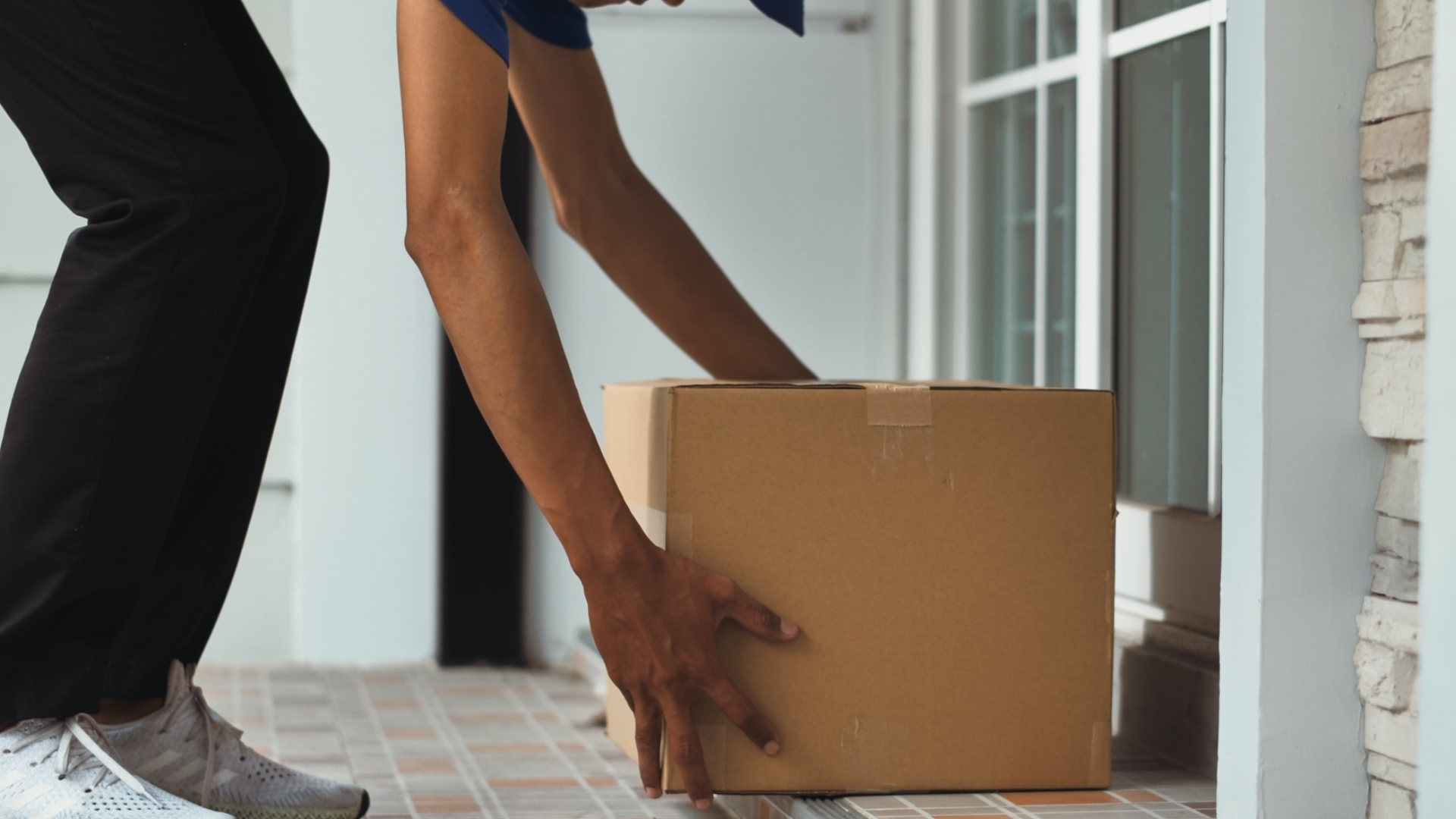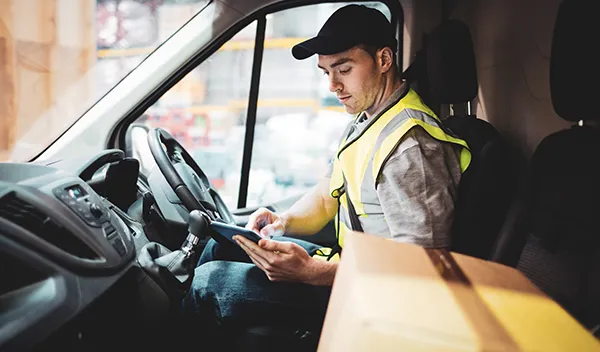Green Logistics: Turn Last Mile Delivery Challenges Into Opportunities
Solve the challenges of last mile delivery and make low-carbon logistics a reality. It’s possible with advanced planning solutions on a digital platform.
In the age of e-commerce, home deliveries are rocketing – and so is the carbon footprint of last mile logistics. Customers want greater levels of convenience and companies are willing to give it to them at the cost of smaller delivery batches, longer routes and higher fuel consumption. By 2030, the boom in delivery vehicles on the road will release an additional six million metric tons1 of carbon emissions. What can companies do to curb the negative environmental impact while striking the right balance between sustainability, costs and efficiency?
Transforming last mile delivery challenges into growth opportunities will depend on a digital strategy powered by virtual twin technology. With advanced planning capabilities on a connected platform, retail, postal and express delivery companies can simplify the complexities of the last mile, upgrade entire delivery networks and plan their path to sustainable logistics.
How One Industry Leader Is Mitigating Grocery Delivery Emissions
By improving its delivery planning and logistics empowered by Dassault Systèmes’ innovative solutions, a global leader in grocery retail was able to reduce its fleet’s travel distances, operational costs and greenhouse gas emissions
Same-day delivery is becoming the norm. To meet the rush toward ever-faster shipping, delivery vehicles leave with much less cargo and embark on longer journeys that increase their transport emissions. With carbon taxes and environmental regulations on the rise, however, these same companies are under pressure to achieve faster, smarter and greener logistics. One way to make sustainable deliveries the new norm is by creating more low-carbon and affordable options: Customers can choose to wait a little longer for their home deliveries, so parcels are shipped through the most energy-efficient route.
Companies can leverage digitalization to explore endless possibilities and perfect their low-carbon delivery strategies.
When companies implement a platform approach, they connect simulation, virtual twin technology and analytics capabilities within a unified environment. As a result, they can:
Sustainable Packaging with Green Logistics Practices
- Improve Packaging
- Optimize Logistics
Improve Packaging
With virtual twin technology, companies can test and identify ergonomic, lightweight and plastic-free packaging materials and designs. This helps them optimize logistics and reduce waste. Simulation enables damage-free deliveries through the modeling of packaging in various transportation and heavy handling scenarios. Companies can also leverage lifecycle assessment to quantify their environmental impact and choose the most sustainable packaging.
Optimize Logistics
By consolidating different data streams into a single platform, companies can use machine learning algorithms to optimize delivery schedules and improve the last mile. The virtual twin allows companies to plan low-carbon shipping routes that satisfy next-day or same-day delivery demands. Paired with advanced analytics, companies gain real-time insights into their logistics operations to manage carbon emissions and accelerate sustainability.
An integrated solution such as the 3DEXPERIENCE® platform empowers stakeholders to improve the value network collaboratively. With a holistic view of entire workforce operations, fleets, assets and warehouses, they can establish dynamic plans and respond to disruptions while minimizing their carbon footprint. Furthermore, data-driven analytics are vital enablers for companies to make smarter choices that simultaneously reduce the transport emissions of home deliveries and contain costs.
As deliveries continue to evolve, companies with virtual twins of their entire operations can better plan, visualize, optimize, operate and maintain their last mile vision. They are equipped to innovate and actualize ideas such as electric vehicles, flexible distribution hubs and parcel collection points that contribute to an optimized last mile route.
“Apart from looking at where retailers and postal and express delivery companies are working, they should also look at their whole ecosystem — from the fully automated stages and depots to the reduction of the CO2 footprint. It all starts with tackling the last mile delivery process, as this is where the most gains can be made by using the right solutions.”
Last mile delivery challenges may seem disruptive, but companies can position themselves to benefit from a changing ecosystem. With the 3DEXPERIENCE platform, they can slash carbon emissions, transform the delivery network and keep customers coming back – all while optimizing costs and resources.
Green Cargo Logistics for Optimized Last-Mile Deliveries
Discover the latest trends in last mile delivery and how companies can keep up by creating low-carbon delivery experiences that will delight customers, bring in profit and benefit the environment.
Benefits of Sustainable Logistics
There are 5 main advantages of green ecological logistics:
Improved long-term profitability
Implementing green logistics practices throughout the supply chain, from the first to the last-mile delivery, leads to a reduction in waste, costs, and carbon emissions. While upfront investments are required to realize the benefits of green logistics, the long-term gains far outweigh the initial costs. Research shows that companies focused on sustainability outperform their counterparts in terms of stock market and accounting performance, making it evident that green business equals good business.
New or enhanced partnerships
Businesses that adopt sustainable supply chains and green logistics not only become more appealing to customers but also attract corporate partners. Large multinational companies are utilizing programs such as the United Nations Global Compact and the Carbon Disclosure Project's Supply Chain Program to evaluate the sustainability and environmental impact of their suppliers. Suppliers, in turn, are eager to collaborate with major brands and are actively investing in reducing their carbon footprints.
Loyal customers
Both retail and business customers demand fast delivery, easy returns, and transparency regarding the sustainability of products and their transportation. Providing insights into the product's origin, sustainable sourcing, real-time tracking, and transparent supply chain practices not only helps attract new customers but also fosters long-term loyalty among existing ones.
Better corporate responsibility reputation
As concerns about global warming and environmental impact continue to rise, companies are increasingly held accountable for their contributions to these issues. Leveraging the advantages of green logistics publicly can enhance a company's reputation and position it favorably in the court of public opinion. Companies that proactively address their environmental footprint, both locally and globally, demonstrate corporate responsibility. Failing to adapt, particularly by not transitioning away from fossil fuels, can damage a company's reputation and put it at a competitive disadvantage.
Easier recruitment
In today's highly competitive job market, every advantage counts. Organizations that prioritize green logistics are more attractive to young professionals seeking to work for companies that align with their values. By embodying sustainable practices, companies can appeal to potential employees who prioritize environmental responsibility and contribute to a positive corporate culture.
1Source: “The Future of the Last-Mile Ecosystem” by The World Economic Forum (January 2020)
FAQ About Sustainable Logistics
Related Content
Circular Economy
How circular economy practices can help your business dare to be bold through new business models that preserve the environment for future generations.
Last Mile Logistics Planning that Delivers
Gain your competitive advantage by managing complex business rules and constraints while simultaneously reducing the cost to serve.
Optimize the parcel from pick up to delivery
Discover the trends changing Postal and Express landscape.
Circular Supply Chains: Reshape the Enterprise’s Value Network
Transform how you do business through circular supply chains to achieve profitability and lasting success.



